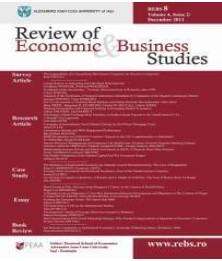PURCHASING POWER PARITY IN RUSSIA AND THE TRANSITIONING ECONOMY 1990-1995
PURCHASING POWER PARITY IN RUSSIA AND THE TRANSITIONING ECONOMY 1990-1995
Author(s): THOMAS L. BRADLEY, PAUL B. EBERLESubject(s): National Economy, Economic history, Economic policy, Government/Political systems, Transformation Period (1990 - 2010), History of Communism
Published by: Editura Universităţii »Alexandru Ioan Cuza« din Iaşi
Keywords: Transition Economies; Russia; Purchasing Power Parity; Former Communist Nations;
Summary/Abstract: The role of purchasing power parity during the Russian transition period from 1990-1995 is studied. This paper describes the many changes during the transition period that provide a real world view of purchasing power parity in a reforming economy on a large scale that has not been seen in the world before or after this time. The authors’ study looks at the real value of the Russian currency and its purchasing power parity valuation during the break-up of the Soviet Union and the transition of the newly created Russian Federation into a more market oriented economy. The undermining of purchasing power parity became a critical piece of the incredible profit achieved by the communist oligarchs. Specific factors and their influence on savings, income, and market structure are examined from the perspective of purchasing power parity. The analysis helps to understand the dramatic changes that took place during the transition period and how it impacted Russia.
Journal: Review of Economic and Business Studies (REBS)
- Issue Year: 2023
- Issue No: 31
- Page Range: 85-111
- Page Count: 27
- Language: English

